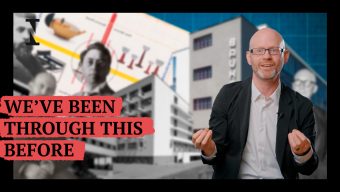Startup is a temporary status—a term for an organization whose vital objective is to launch a new business model or open up a new market. For such companies, the model that identifies four primary sources of innovation—product, process, business, and customer—is inappropriate, an obstacle to the development of truly transformational ideas. Startups look at innovation from a different angle. After considering the needs of a particular industry or market, they deploy a new plan to improve the industry (incremental innovation) or create an entirely new market (disruptive innovation).
Innovative ideas, by themselves, are not enough; they are just one element of the journey towards market domination. Just as a drug can cure one disease but not another, startups have to apply innovation in an intelligent way that actually solves their customers’ problems. This is the main difference between how startups and traditional companies approach innovation.
The concept of innovation encompasses three fundamental characteristics:
- For the consumer, innovation must always result in something new. If you compare what existed before with the new creations, you should see a positive advance.
- Innovation doesn’t always involve the incorporation of new technologies. Value can be created for customers in various non-technical ways: designing a special customer experience, applying the low-cost concept to other consumer services, or introducing an unusual distribution model.
- Innovation must have commercial value; if it yields no benefits, it’s just an idea.
Innovative ideas, by themselves, are not enough; they are just one element of the journey towards market domination. Startups have to apply innovation in an intelligent way that actually solves their customers’ problems.
Three exploration frameworks
For innovative entrepreneurs, the process of solving the customer’s problems begins with observing people and keeping abreast of technological changes. The next step is to ask whether there are any business opportunities that solve existing problems or address existing needs, taking into account that the proposal must be relevant and valuable to customers.
By combining this reflection with the three fundamental elements of innovation, we can define three exploration frameworks that allow startups to generate ideas that are both innovative and aligned with the elusive taste of the customer.
Framework 1: Change what doesn’t work
In this framework, the idea is to innovate incrementally. Borrow an existing idea or well-known service, assess its problems, and figure out how to do it better. Many kinds of attributes can be improved; adding new functions to the product is not the only way forward. The most interesting approaches often have to do with reducing or eliminating inefficiencies related to time, cost, risk, or effort. To be clear, “doing better” means more than just a simple product update.
Framework 2: Make things easier for customers
Being disruptive is clearly more difficult, since it involves disregarding known problems and preconceived notions in order to see things in a new light. This framework requires a certain degree of abstraction; rather than improving a defined product, you’re finding a new way of doing something.
The art of making things easier is explained by the well-known design theory of simplicity. The idea is not to eliminate the superfluous functions of a product or service but to tap the innovative entrepreneur’s in-depth knowledge of a particular subject in order to define the essence of the problem. It’s about starting from scratch and using your imagination to describe how things should be.
Products or services designed with simplicity also have another advantage: people use them more often and they are usually quite beautiful. However, a simple design only seems obvious once someone comes up with it.
Framework 3: Make things more affordable
The idea here is to take something viewed by certain consumer segments as a luxury item, imagine its ideal use, determine how much it should cost, and transform it into an affordable mass-consumption good.
This framework overlaps somewhat with the low-cost concept—here, too, the aim is to expand the consumer market—but in this case the quality of the solution offered to the customer is not sacrificed. This framework should not be confused with occasional markdowns used as a marketing tool.
The three-framework methodology can give established companies the same internal benefits as those enjoyed by startups in terms of agile uncertainty management.
Combating inertia
What are the implications of this way of exploring innovative business ideas? What parts of this startup-appropriate strategy can be applied in mature organizations, and how?
For any company bringing an innovation to market, one of the biggest frustrations is the discovery that potential users do not behave as expected. One lesson we can learn from startups is that we should begin by considering the customers’ problems and let them guide the innovation process. Companies should not prescribe new products or innovative services without first understanding what’s going on with their customers. What, exactly, is their problem?
At this very moment, a hundred startups are probably working on the same idea—one that could transform the conception of new products or services in a particular market. It is quite difficult for any single company to compete with this degree of exploration and development of possibly revolutionary ideas. Given this innovation bottleneck, it is essential for business executives to explore interesting new ways of planning and investing in resources for innovation and to consider new factors in these decisions.
In innovation management, it is often said that no limits should be placed on the type, origin, or purpose of ideas. It may come as a surprise that the innovation journey requires the adoption of a framework to direct exploration towards the most innovative ideas. Reflecting on these three frameworks does not stifle innovation; in fact, it can help companies focus on analyzing and developing ideas that better resemble what the target customer ultimately wants.
Startups operate in relatively unexplored territory. Compared with traditional companies, they are more willing to take risks on disruptive proposals. Nevertheless, the three-framework methodology can give established companies the same internal benefits as those enjoyed by startups in terms of agile uncertainty management. The key is to harness the essence of a startup.
© IE Insights.











